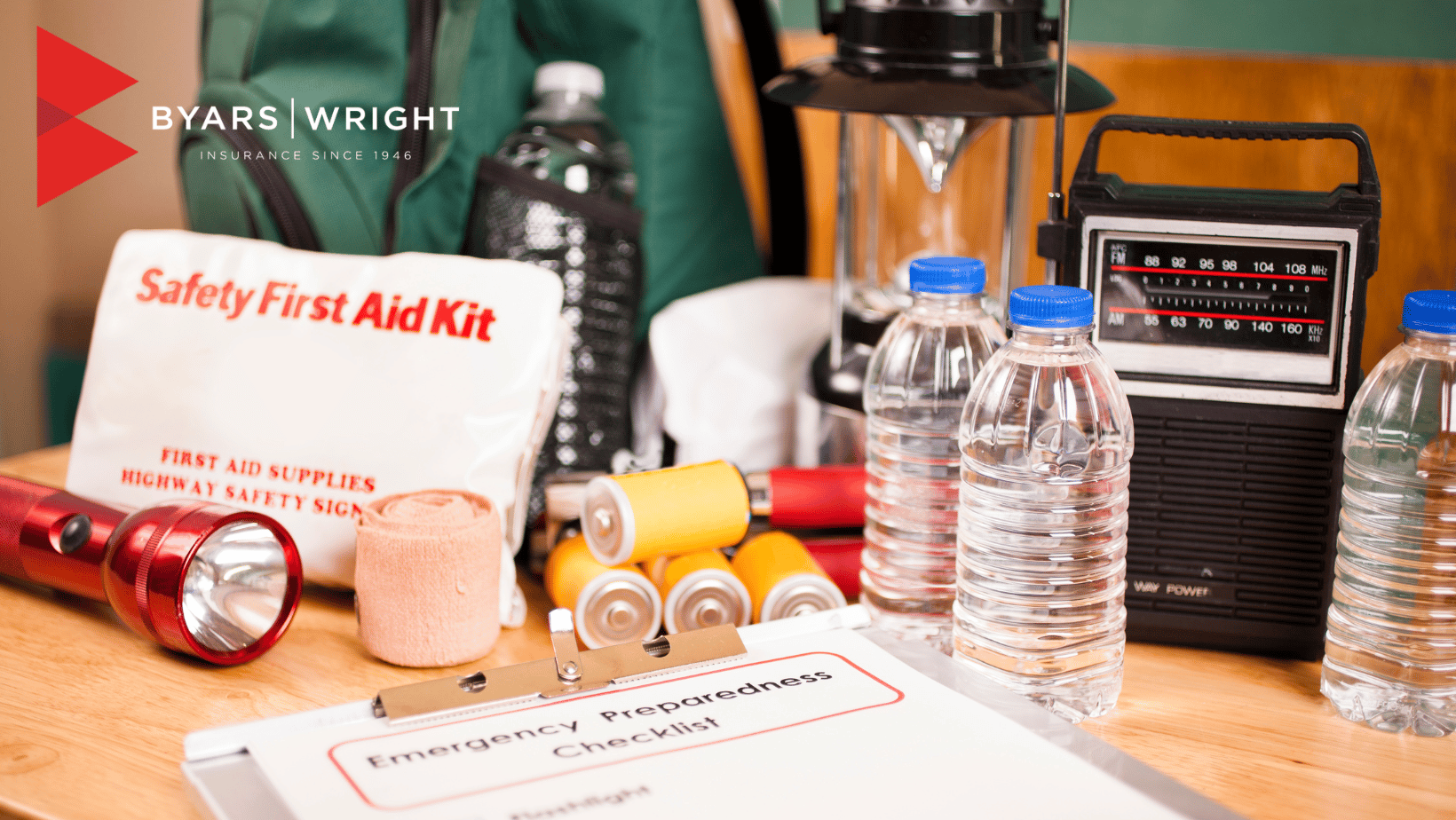
05 Dec Are You Prepared? Emergency Supply Kit Checklist
Everyone should have some basic supplies on hand in order to survive for at least three days if an emergency or disaster occurs. This emergency supply kit checklist includes some basic items that every emergency supply kit should have; however, it is important that as you review this list, you also consider the unique needs of your family in order to create an emergency supply kit that will meet those needs. Ideally, you should maintain at least two emergency supply kits— one full kit at home and smaller, portable kits in your vehicle and at your workplace, or any other places that you spend time.
General Recommended Supplies for your Emergency Supply Kit
– One gallon of water per person per day at least for three days, for drinking and sanitation
– At least a three-day supply of non-perishable food
– A battery-powered radio and a National Oceanic and Atmospheric Weather Radio with tone-alert and extra batteries for both
– A flashlight and extra batteries
– A first-aid kit
– A whistle to signal for help
– Infant formula and diapers, if you have a baby
– Moist towelettes, garbage bags, and plastic ties for personal sanitation
– A dust mask or cotton t-shirt, to help filter the air
– Plastic sheeting and duct tape for sheltering in place
– A wrench or pliers to turn off utilities
– A can opener for food if your kit contains canned food
– Cellphones and chargers
Clothing and Bedding
When the weather is cold, you must think about warmth. It is possible that the power will be out and you will not have heat. Rethink your clothing and bedding supplies to account for growing children and other family changes. You should have one complete change of warm clothing and shoes per person, including:
– A jacket or coat
– Long pants
– A long-sleeved shirt
– Sturdy shoes
– A hat and gloves
– A sleeping bag or warm blanket for each person
Family Supply List
Below are some other items for your family to consider adding to your supply kit. Some of these items, especially those marked with an asterisk (*), can be dangerous, so an adult should collect these supplies.
– Emergency reference materials, such as a first-aid book
– Rain gear
– Mess kits, paper cups, plates and plastic utensils
– Cash or traveler’s checks
– Paper towels
– A fire extinguisher
– A tent
– A compass
– Prescription medications and glasses
– Infant formula and diapers
– Pet food and extra water for a pet (if applicable)
– Matches in a waterproof container*
– A signal flare*
– Paper and pencils
– Personal hygiene items, including feminine supplies
– Disinfectant*
– Household chlorine bleach*
– A medicine dropper
– Important family documents, such as copies of insurance policies, forms of identification and bank account records in a waterproof, portable container
– Local maps
Contact Us
Byars|Wright Insurance is committed to helping you and your loved ones stay safe when disaster strikes. For more risk management guidance and emergency supply kit checklist tips, contact us today.


